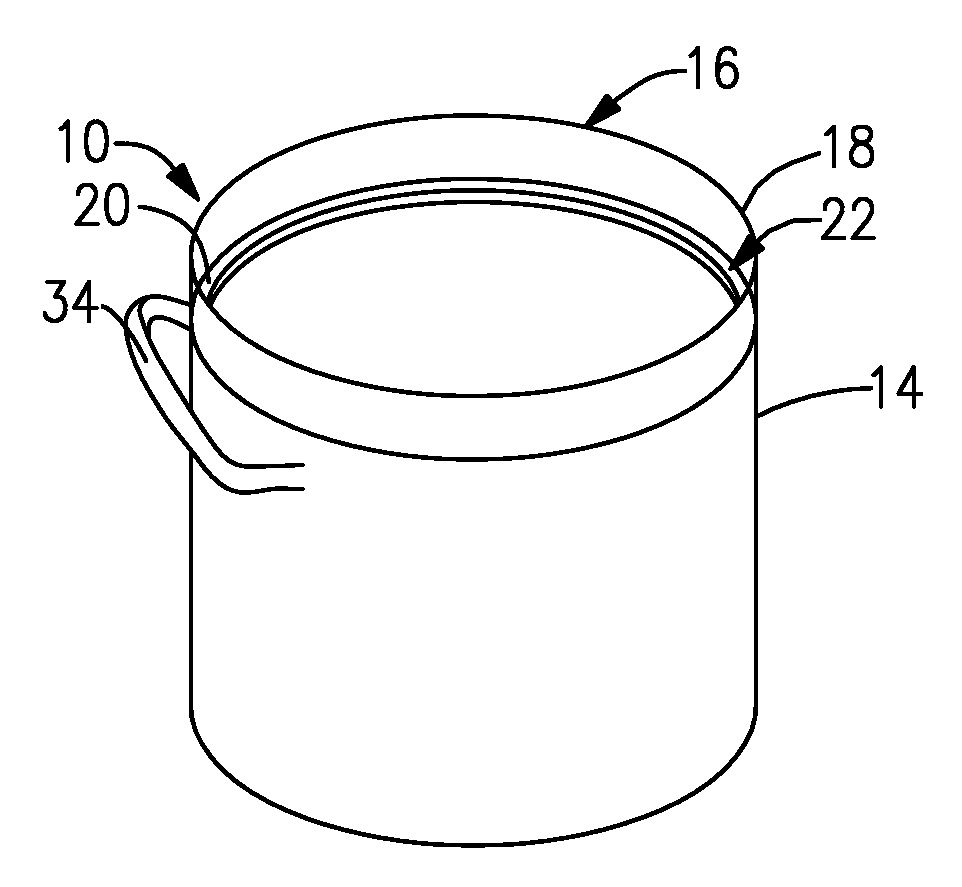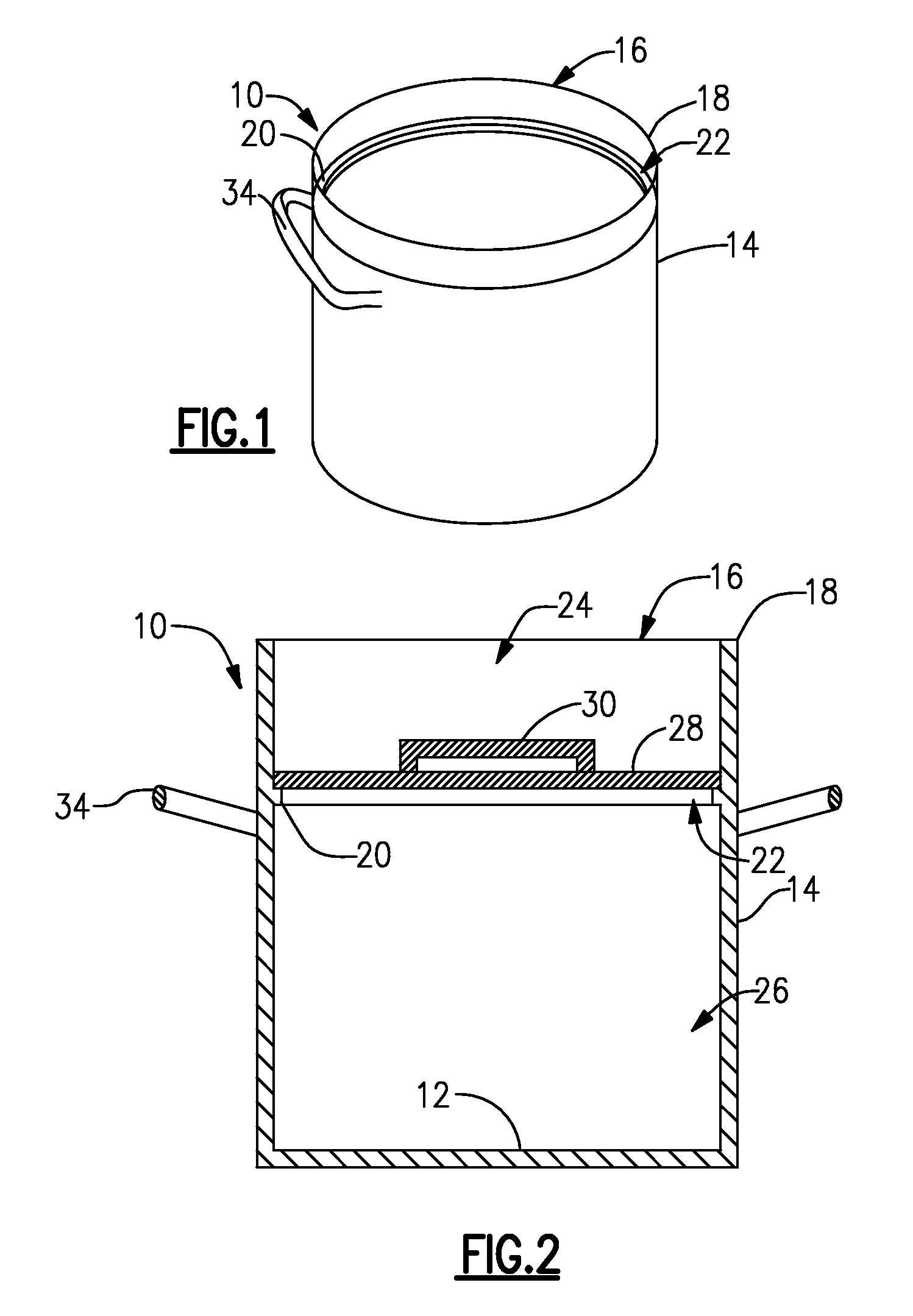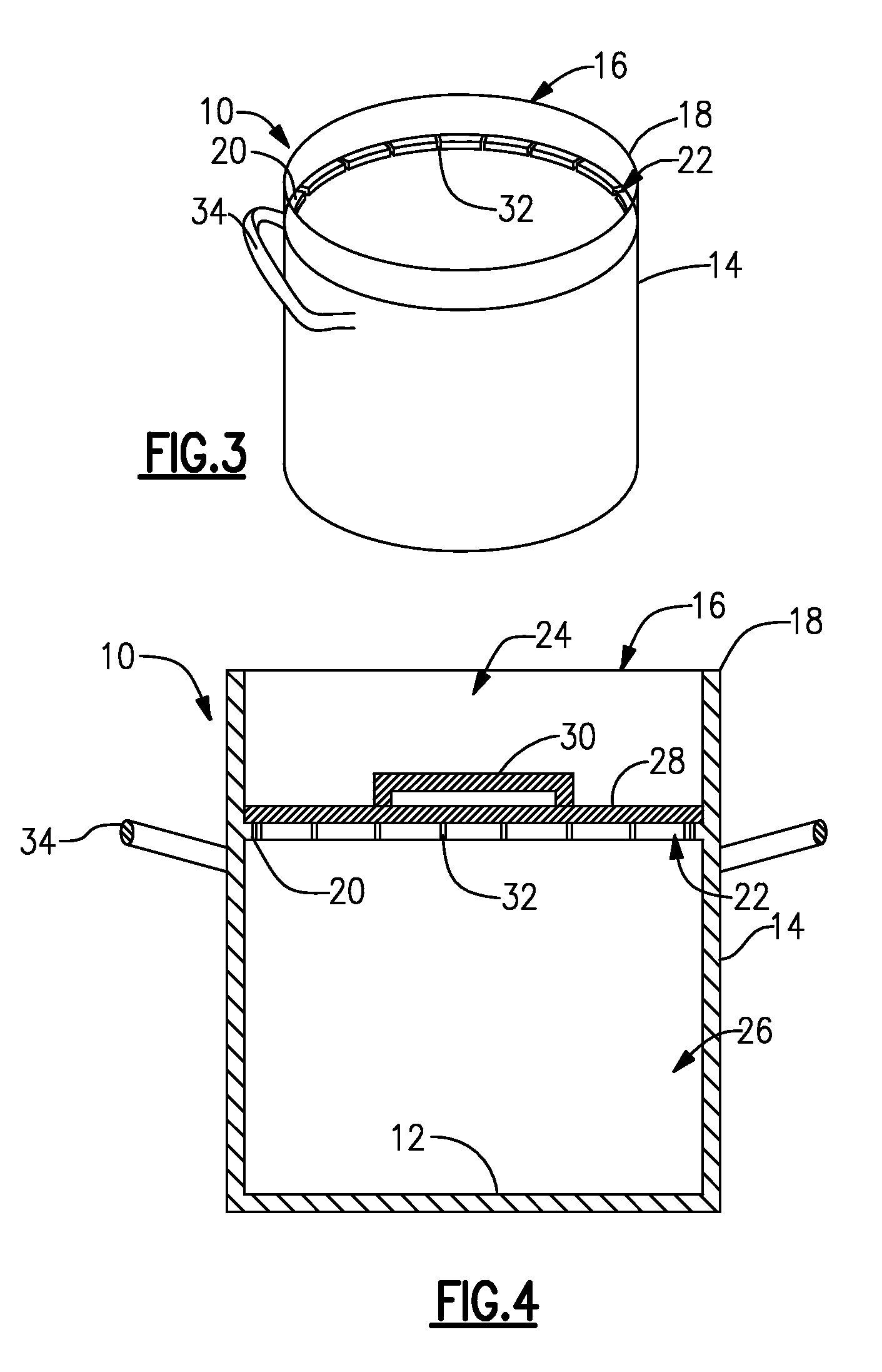High speed, spill-proof cooking container
a cooking container, high-speed technology, applied in the field of cooking containers, can solve the problems of rapid expansion of the contents affecting the cooking speed of the cooking pot, so as to prevent spillage or boiling, prevent saturation or breakage, and cook faster
- Summary
- Abstract
- Description
- Claims
- Application Information
AI Technical Summary
Benefits of technology
Problems solved by technology
Method used
Image
Examples
example 1
Yams
(Sweet Potatoes)
[0048]
1 cup (250 ml) orange juice½ cup (125 ml) brown sugar2 large sweet potatoes1 teaspoon (5 ml) grated orange zestSalt, to taste2 tablespoons (30 ml) butter
Directions:
[0049]Pour the orange juice into the cooking container. Peel the sweet potatoes and cut them in half lengthwise. Arrange in the cooking container and sprinkle with salt, brown sugar and orange zest. Dot with butter. Put the lid in place, heat on high and cook for 25 minutes. Remove the lid and lift out the sweet potatoes. In contrast, a conventional cooking pot (All Clad) takes 55 minutes to 1 hour 10 minutes to cook the yams. By way of additional example, boiling whole, large potatoes cut into slices takes about 13 minutes in the pot of the invention, as compared to a conventional cooking pot (All Clad, Paderno and Mauviel) which takes 45 minutes to 1 hour to boil the potatoes.
example 2
Beans
[0050]Old-fashioned baked beans were a traditional weekend dish on the east coast of Canada and the US. Sometimes called Boston baked beans with the addition of pork. In recent years due to people's active lifestyles, it has fallen out of favor because of the traditionally long baking time (about 7 hours). Even pressure cookers require the beans to be soaked for about 8 hours prior to cooking. The cooking container of the present invention now make it easy and fast, cutting the cooking time down to about 1 hour without soaking.
2 cups (500 ml) dry navy beans2 fl oz (80 ml or ½ small can)(also called white beans or pea beans)tomato paste3 tablespoons (45 ml) canola oil3 tablespoons (45 ml) brown sugar1 large onion, diced2 tablespoons (30 ml) molasses1 clove garlic, minced½ teaspoon (2.5 ml)1¾ cups (400 ml) waterprepared mustard¼ teaspoon (1 ml) cumin⅛ teaspoon (0.5 ml) chilipowder
Directions:
[0051]Rinse and the beans in water. Add all ingredients except the beans to the cooking co...
example 3
Pot Roast with Vegetables
[0052]
3¼ lb (1.5 kg) chuck or round roast,2 bay leavestrimmed of excess fat1 teaspoon (5 ml) dried thyme4 tablespoons (60 ml) vegetable oil—Salt and pepper1 lb (450 g) medium-size red1 cup (250 ml) onion, finely choppedpotatoes, scrubbed and½ cup (125 ml) carrot, finely choppedquartered½ cup (125 ml) celery, finely chopped3 large-size carrots, peeled½ cup (125 ml) parsnip or turnip, finelyand cut into 5 or 6 chunkschopped3 large-size parsnips, peeled2½ cups (625 ml) beef stockand cut into 5 or 6 chunks
Directions:
[0053]Roast: Heat 3 tablespoons oil in cooking container and heat over high heat. Add meat and brown well on all sides lifting meat frequently with long wooden spoon to prevent sticking—about 2 to 3 minutes per side. Add extra oil as needed. Season each side with salt and pepper (use less if using canned stock or bouillon). Remove meat to platter and set aside. In blackened oil remaining in cooking container, sauté the chopped onion, carrot, celery, ...
PUM
 Login to View More
Login to View More Abstract
Description
Claims
Application Information
 Login to View More
Login to View More - R&D
- Intellectual Property
- Life Sciences
- Materials
- Tech Scout
- Unparalleled Data Quality
- Higher Quality Content
- 60% Fewer Hallucinations
Browse by: Latest US Patents, China's latest patents, Technical Efficacy Thesaurus, Application Domain, Technology Topic, Popular Technical Reports.
© 2025 PatSnap. All rights reserved.Legal|Privacy policy|Modern Slavery Act Transparency Statement|Sitemap|About US| Contact US: help@patsnap.com



